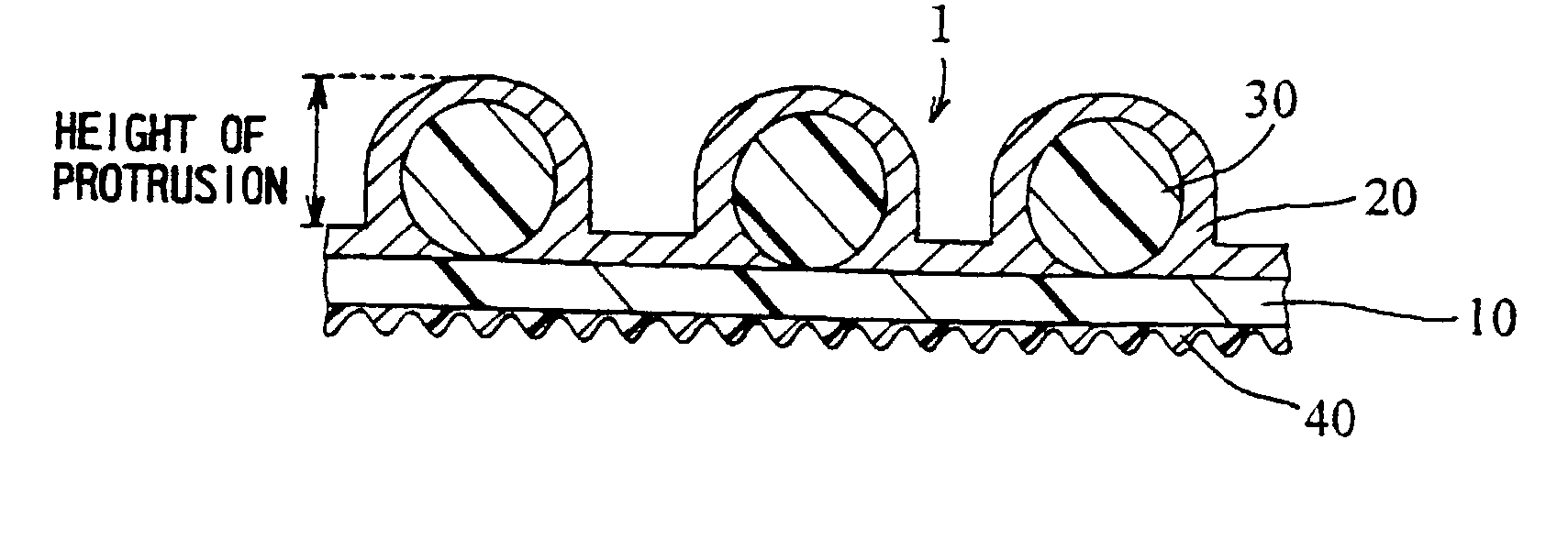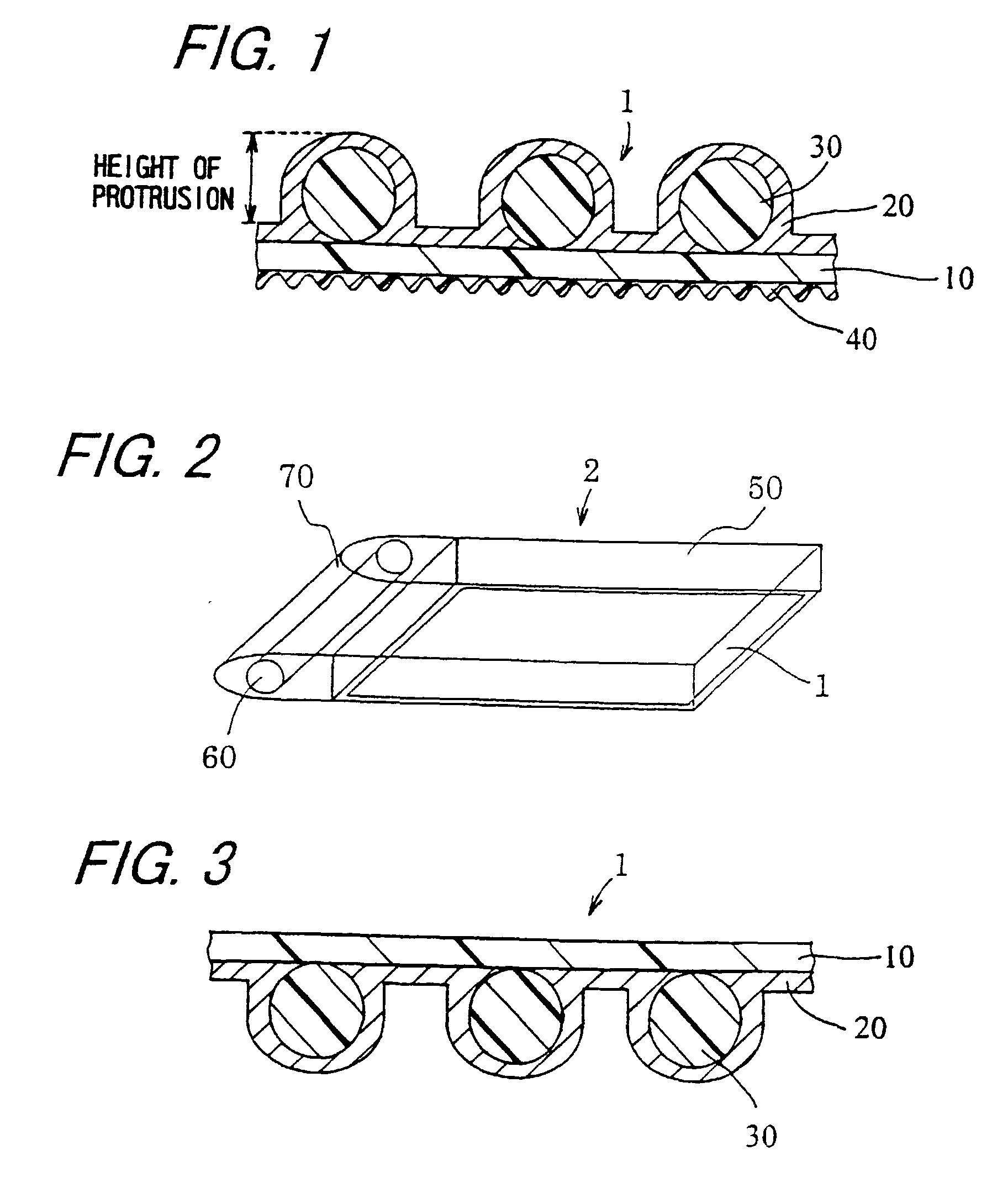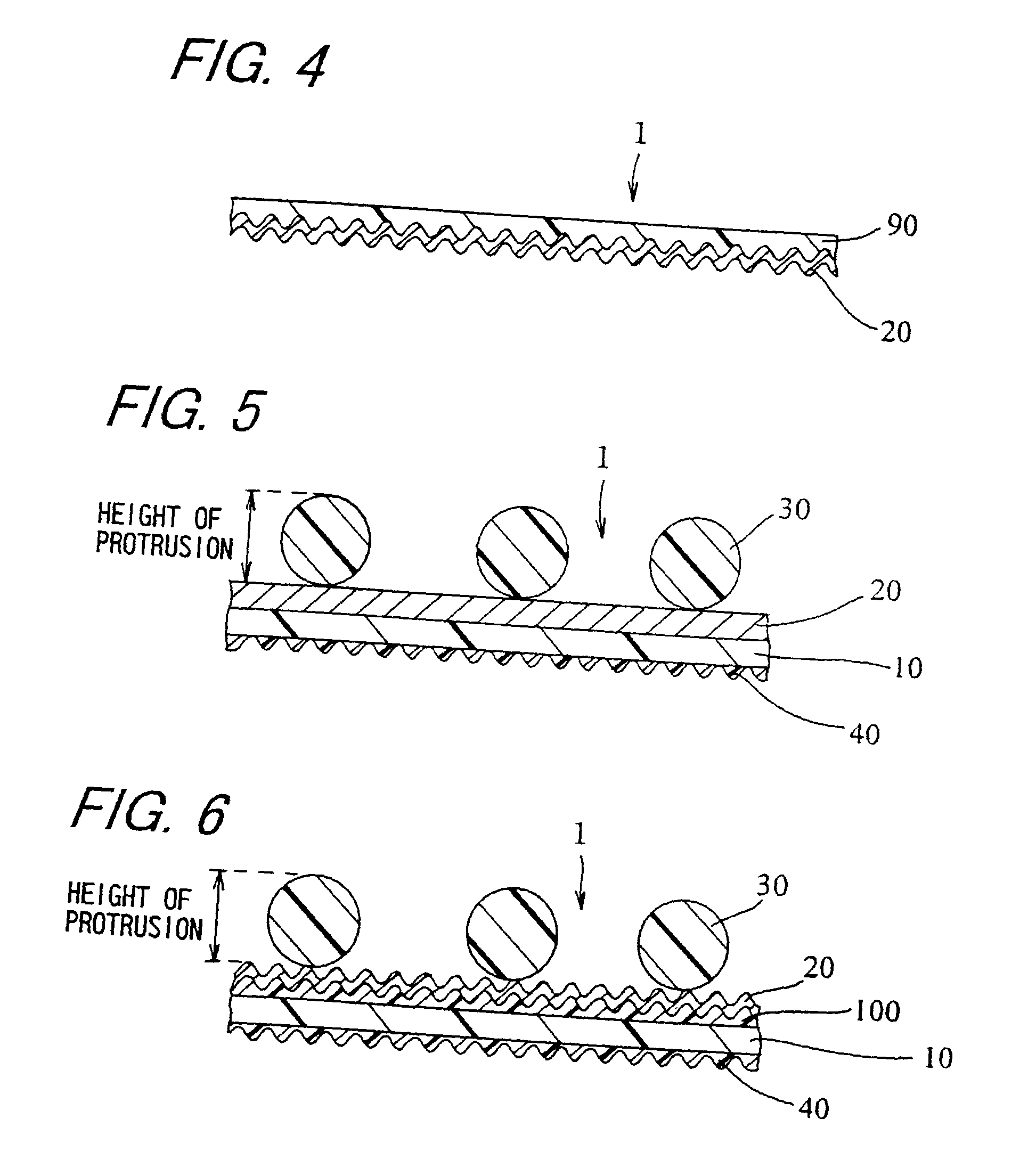Reflector, sidelight type backlighting apparatus and reflector substrate
a backlighting apparatus and reflector technology, applied in the direction of mirrors, instruments, prisms, etc., can solve the problems of irregular luminance, loss of diffuse reflection components, and insufficient illumination as a whole, and achieve the effect of improving brightness
- Summary
- Abstract
- Description
- Claims
- Application Information
AI Technical Summary
Benefits of technology
Problems solved by technology
Method used
Image
Examples
example 1
[0110] As the protrusions, acrylic particles 30 .mu.m in mean particle diameter were blended at an amount of 6.0 wt % in an acrylic resin binder, and a solution was prepared by adding a solvent comprising toluene and methyl ethyl ketone in such a manner that the solution may contain 24 wt % of solid matter. The resulting solution was applied to a 188-.mu.m thick PET film to obtain protrusions on the surface A. Then, acrylic particles 1.5 .mu.m in mean particle diameter were blended at an amount of 2.0 wt % in an acrylic resin binder, and a solution was prepared by adding a solvent comprising toluene and methyl ethyl ketone in such a manner that the solution may contain 15 wt % of solid matter. The resulting solution was applied to a PET film to obtain a smoothed surface on the surface B.
[0111] Subsequently, a zinc oxide layer was formed at a film thickness of 5 nm on the surface A side by means of DC magnetron sputtering using zinc oxide (purity: 99.9%) doped with 2% of Al.sub.2O.su...
example 2
[0112] As the protrusions, acrylic particles 35 .mu.m in mean particle diameter were blended together with an acrylic resin binder at an amount of 5.5 wt % each, and a solution was prepared by adding a solvent comprising toluene and methyl ethyl ketone in such a manner that the solution may contain 24 wt % of solid matter. Then, a 188-.mu.m thick PET film one surface of which was subjected to sand blasting treatment was prepared, and the resulting solution was applied to the non-treated surface of the film to obtain protrusions on this non-treated surface (surface A). Then, a reflection layer 20 was formed in conformity with the condition of Example 1, whereby a reflector 1 was obtained. Subsequently, measurements were conducted in a manner similar to that described in Example 1 to obtain the following results: a total reflectance of 93.8%; a diffuse reflectance of 6.6%; a diffusivity of 7.0%; an average value for the height of the surface A side protrusions of 28.8 .mu.m; an averag...
example 3
[0117] As the protrusions, particles of acrylic resin (manufactured by Negami Kogyo Co., Ltd.) 5 .mu.m in mean particle diameter were blended together with an acrylic resin (manufactured by Mitsui Chemicals Inc., trademark Almatex) binder in a solvent comprising toluene and methyl ethyl ketone in such a manner that the resulting solution may contain 35 wt % of solid matter and that the particles may account for 10 wt % of the solid matter. Then, the resulting solution was applied to a 50-.mu.m thick PET film to obtain a protrusion layer. Subsequently, on the protrusion layer, a 5-nm thick layer of zinc oxide was formed as a light transmitting oxide film layer by means of DC magnetron sputtering using zinc oxide (99.9% purity) doped with 2% of Al.sub.2O.sub.3 as the target and 99.5% pure argon as the sputtering gas. Then, without taking the film out from the sputtering apparatus, a 200-nm thick layer of silver was formed similarly as a silver layer by means of DC magnetron sputtering...
PUM
 Login to View More
Login to View More Abstract
Description
Claims
Application Information
 Login to View More
Login to View More - R&D
- Intellectual Property
- Life Sciences
- Materials
- Tech Scout
- Unparalleled Data Quality
- Higher Quality Content
- 60% Fewer Hallucinations
Browse by: Latest US Patents, China's latest patents, Technical Efficacy Thesaurus, Application Domain, Technology Topic, Popular Technical Reports.
© 2025 PatSnap. All rights reserved.Legal|Privacy policy|Modern Slavery Act Transparency Statement|Sitemap|About US| Contact US: help@patsnap.com



